2021 Nissan GT-R: First Drive Review
The Japanese supercar known as “Godzilla” is more fearsome than ever.
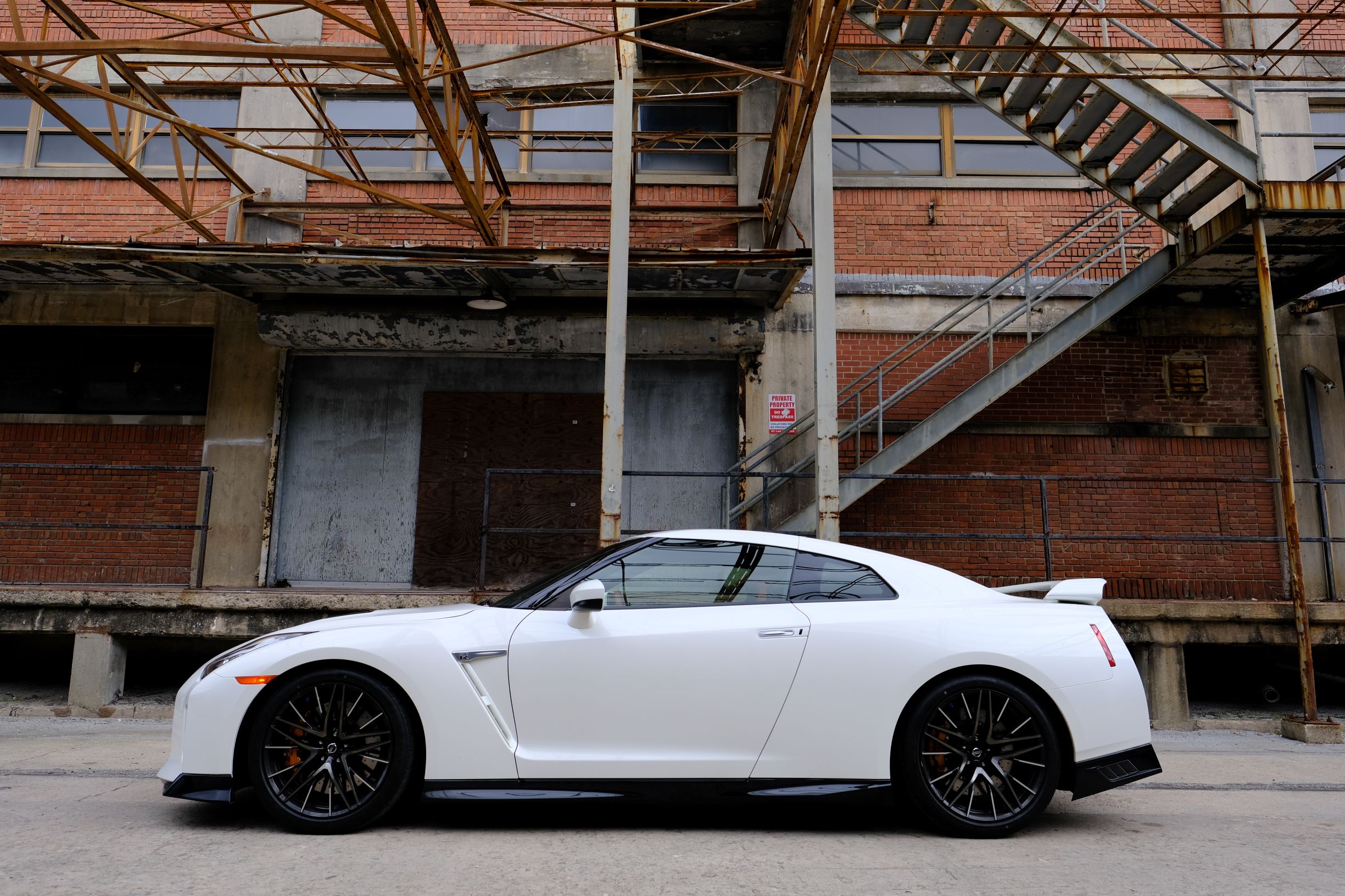
It was my last day with the GT-R. I’d been waiting for the rain to stop for days, to do something I didn’t want to miss. I woke up to gleaming sunlight and bone-dry roads, and headed for a deserted stretch of road in an industrial area a mile from my house––a no-man’s-land between a freeway and tidal marsh. This inauspicious slab of asphalt offered me my chance to finally try out the Launch Control on the 2021 GT-R.
There wasn’t another soul in sight. The engine and tires were warmed up. I set the three toggle switches on the console into R mode, put one foot on the brake and the other on the gas. As soon as my RPM jumped to 4,000, I took my foot off the brake, kept the gas pedal on the carpet, and felt my internal organs defy gravity. The G-force was instant––shoving me into the leather bucket seat as the tires jittered for traction. The GT-R took off down the asphalt like it was shot from a rail gun.
Flush with adrenaline and fear, I took my foot off the gas, eased on the brakes, and let out a deep breath. Launching the GT-R is one of those things in life that actually is all that it’s cracked up to be.
The History
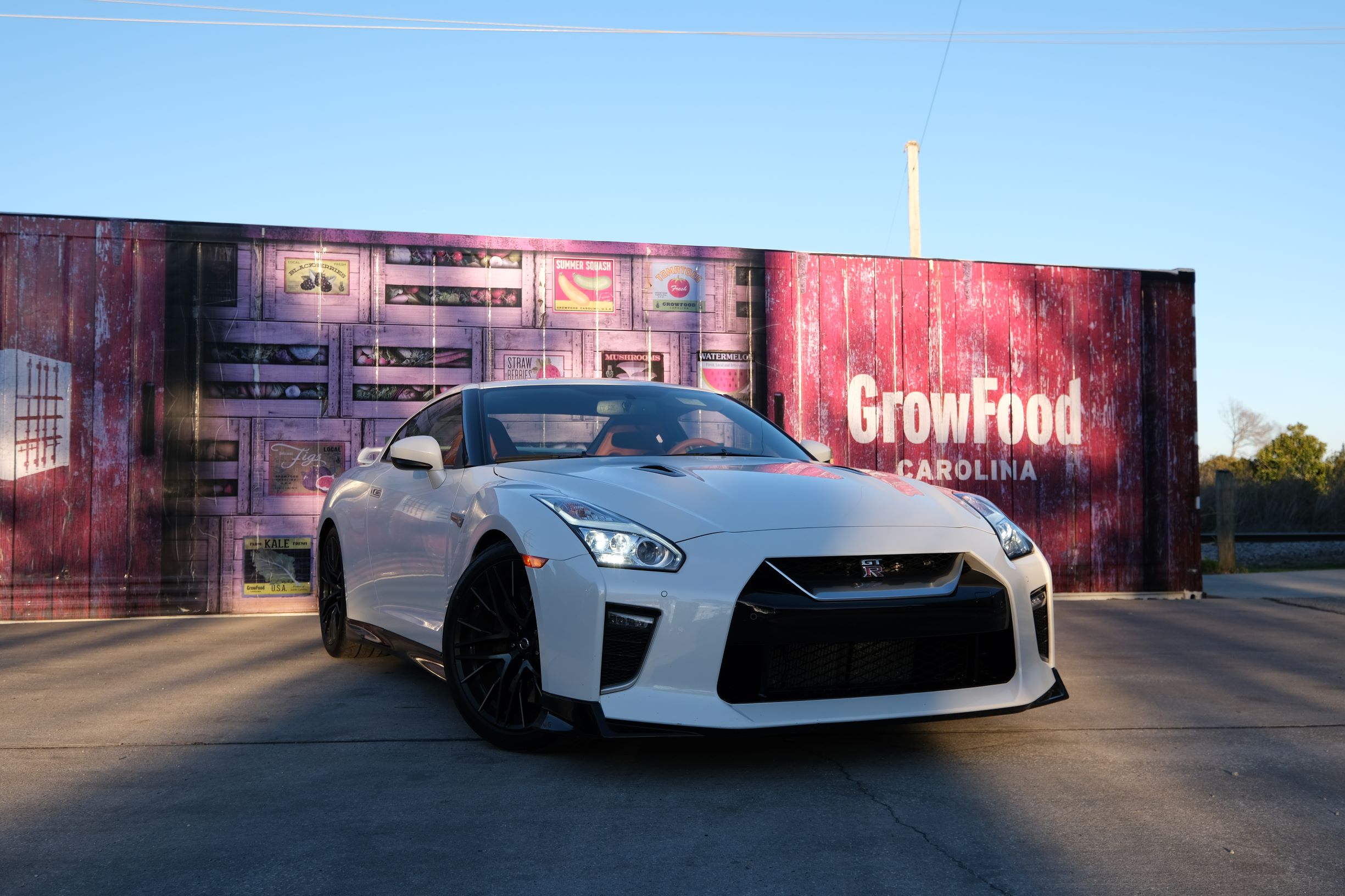
The GT-R’s storied history stretches back to its introduction in 1969. Called the Skyline, and also known by its nickname, Godzilla, it was long the stuff of car buff dreams. For its first four decades of existence, it eluded the US market; eventually showing up in The Fast and The Furious as if just to taunt us.
And then finally, in 2008, it arrived in the US, dropping the Skyline name. A race car that could give a Ferrari a run for its money, for south of $80,000. Now, 13 years on, the price of entry has climbed $113,000 (and $121,000 for the one I tested). But there have been steady improvements in the formula, both inside and out.
Physically, the GT-R is far more beautiful in person than I ever realized. The way the flanks curve, the black triangular hood vents, the blue-tinted titanium exhaust tips, and the fold-out door handles that lie flush with the body until you push them out, wing-like, are just a few of the design elements that stood out in a car that holds its own in the face of Italian automotive beauty.
What It’s Like to Drive
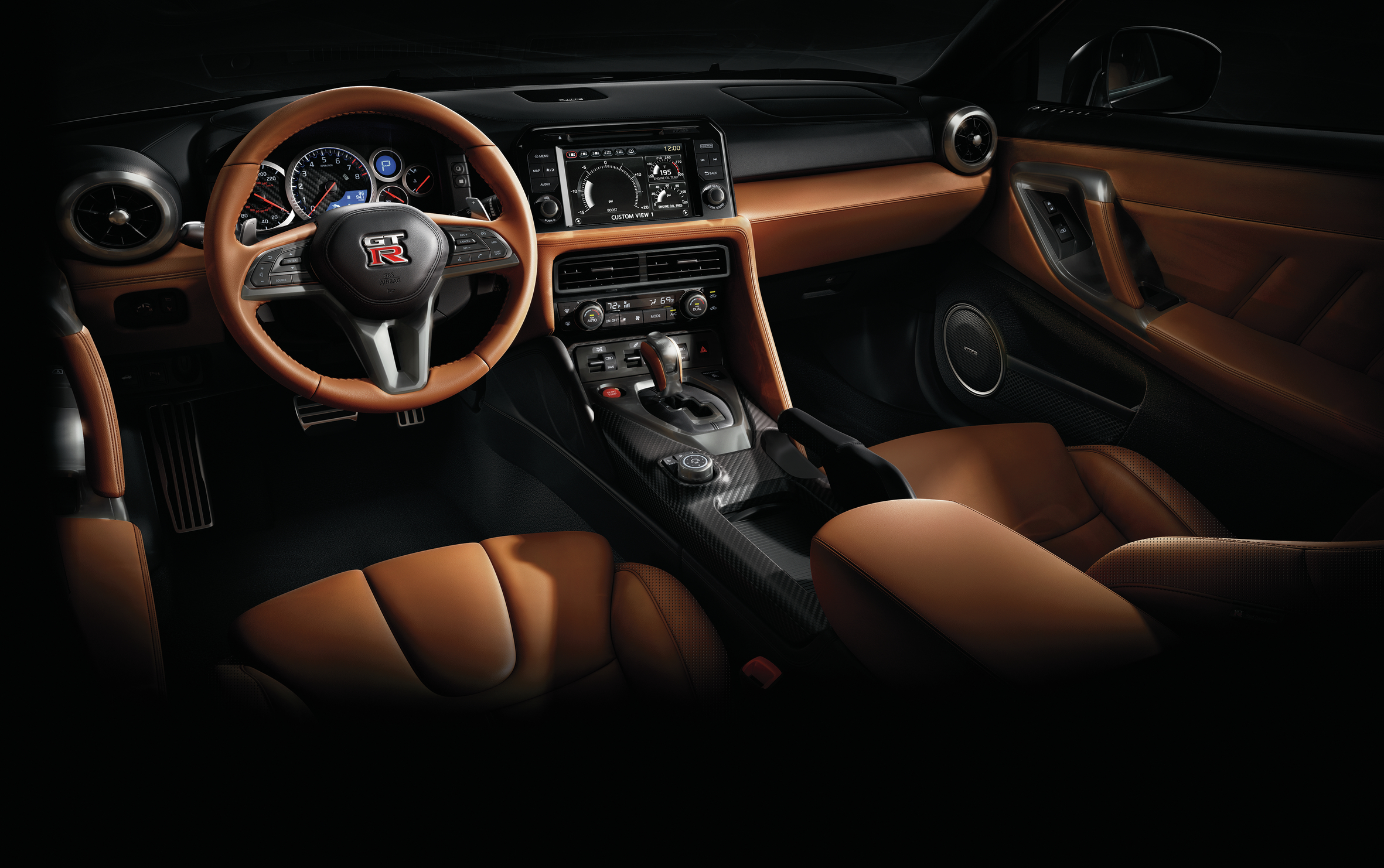
We have gotten so used to our smartphone and tablet experience cross-breeding with our car dashboards that it’s both disorienting and refreshing to climb into a car that, from the driver’s POV, seems deliberately analog.
There’s a large hand brake, and a red ignition switch that looks like you’d find it in car that isn’t street legal. The infotainment screen is small, and not particularly HD. The instrument cluster has actual needles, with the RPM at the center. In an age of head’s up displays flashing at you anytime you go over the speed limit, the speedometer of the GT-R is easily ignored. Not only is it out of your immediate line of site, but 60mph is about where 20 mph is on normal speedometers, so when you’re just driving around town, your speed barely registers.
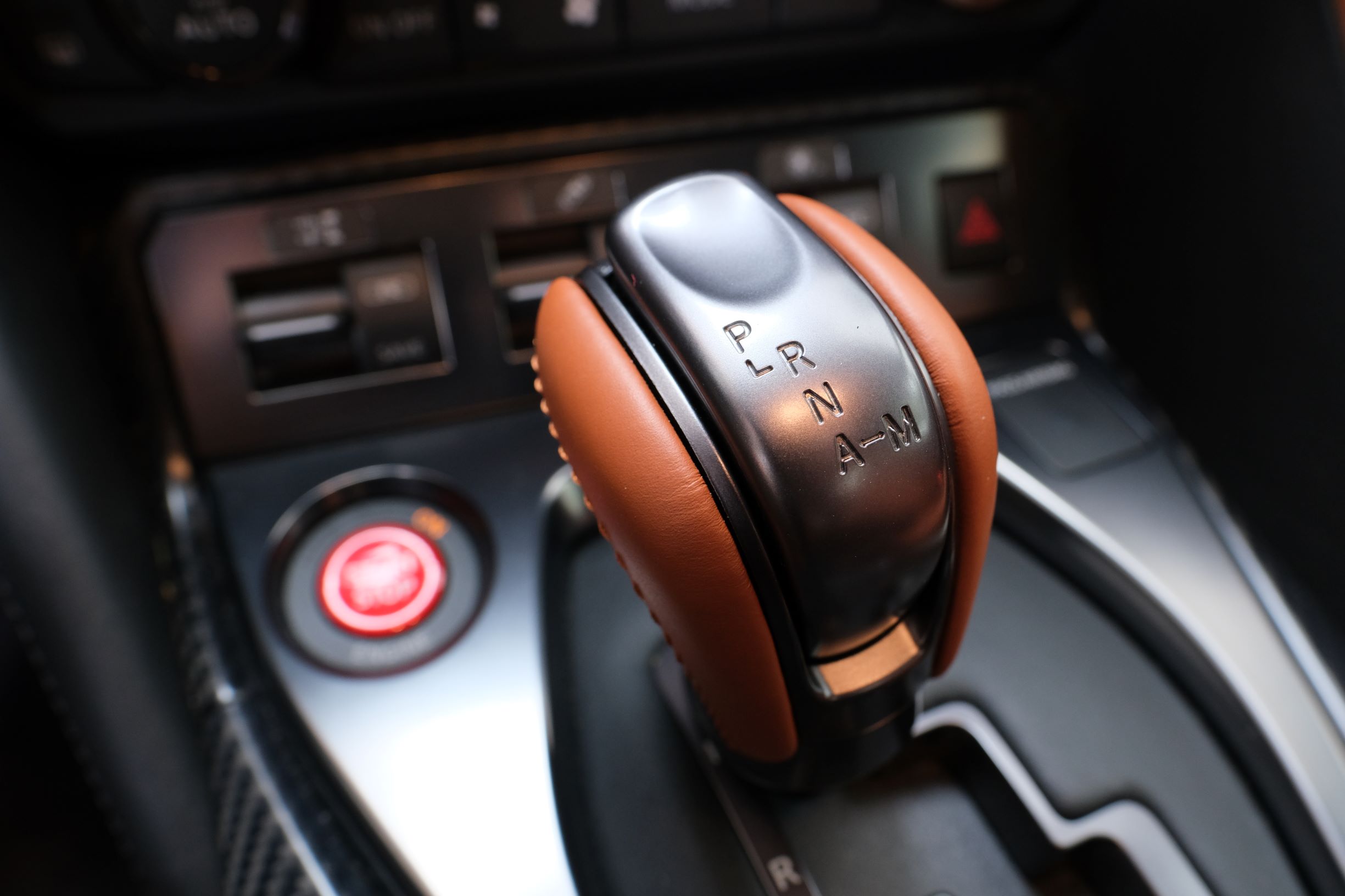
The R Mode is activated through three beefy toggle switches that would be at home in a vintage jet. Add it all up, throw in some miniscule back seats, and this interior tells you immediately that despite the soft leather and satin-finish carbon fiber, you’re in for raw, race car experience.
I’ve never felt more dared by a car to drive fast. The carpet directly beneath the gas pedal has a strange existential pull, as if inviting you to test the limits of your courage, and/or fear. At lower speeds, the GT-R is not as immediately fast as I expected. In city traffic, at low RPM, you’re not scaring joggers, let alone yourself. But at 3,500 RPM, the turbos come alive, and all bets are off.
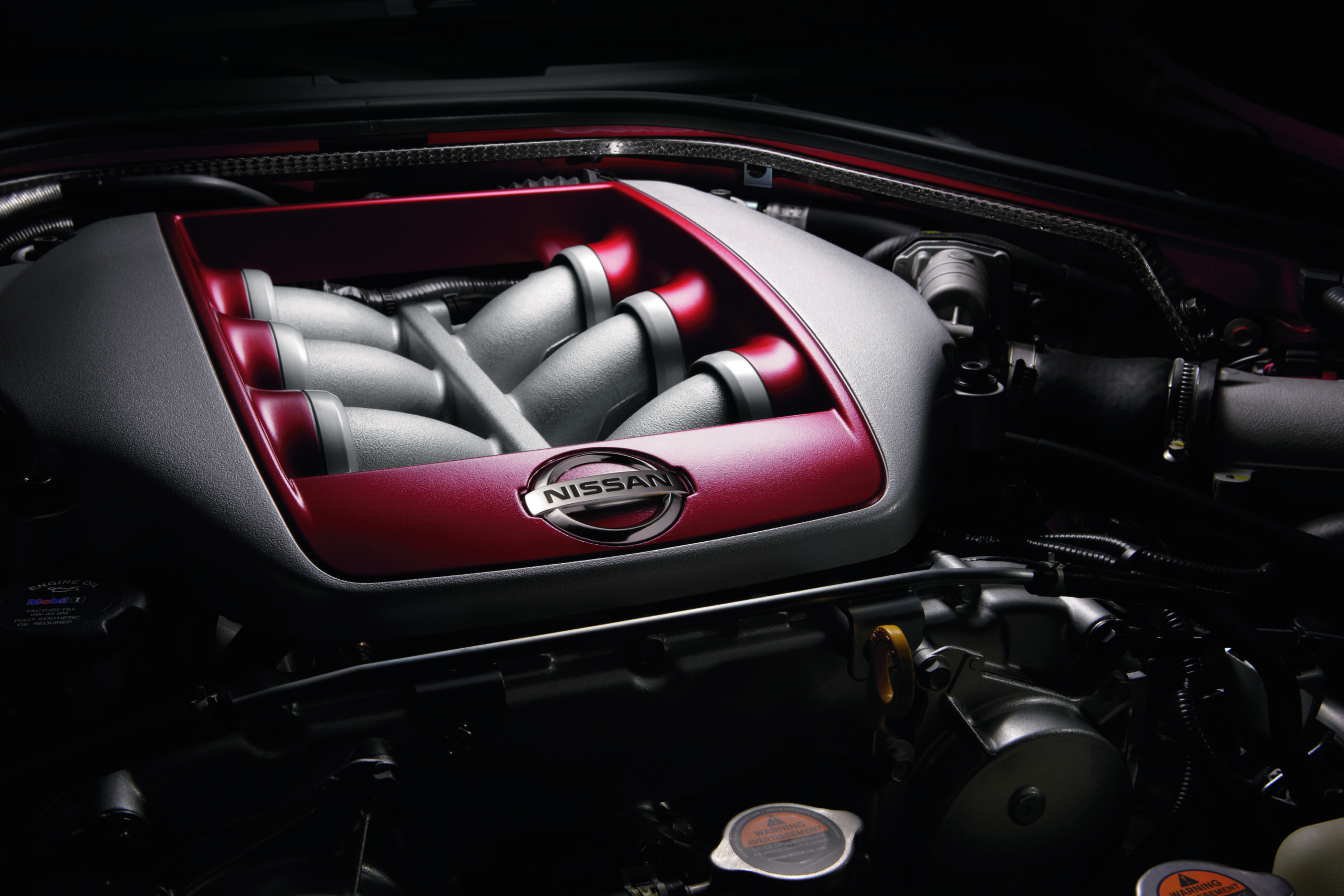
On the freeway, it seemed like a regular very fast car until about 65 or 70 mph, and then it very quickly becomes not a normal car when the turbo spinners threaten to turn 70 to 100-plus mph in a matter of seconds. You expect to feel its power show up a little too early, and when it finally comes, it arrives frighteningly late. As if to say smugly, “You may be trying to win the left lane game, buddy, but I am here to win the Nurburgring.”
The beating heart of the GT-R is the 565-horsepower 3.8-liter twin-turbo V6, each one hand-assembled by a Nissan master craftsman, and the intelligent ATTESA E-TS (Advanced Total Traction Engineering System for All-terrain with Electronic Torque Split). This alphabetic mouthful is the GT-R’s secret sauce, the hyper-intelligent all-wheel-drive system controlled by a computer that monitors each wheel 10 times per second for traction loss. It’s a comfort, then, that steering at speed is remarkably nimble; if you so much as hint at a turn, you’ve already made it. This thing changes lanes faster than you can touch your blinker.
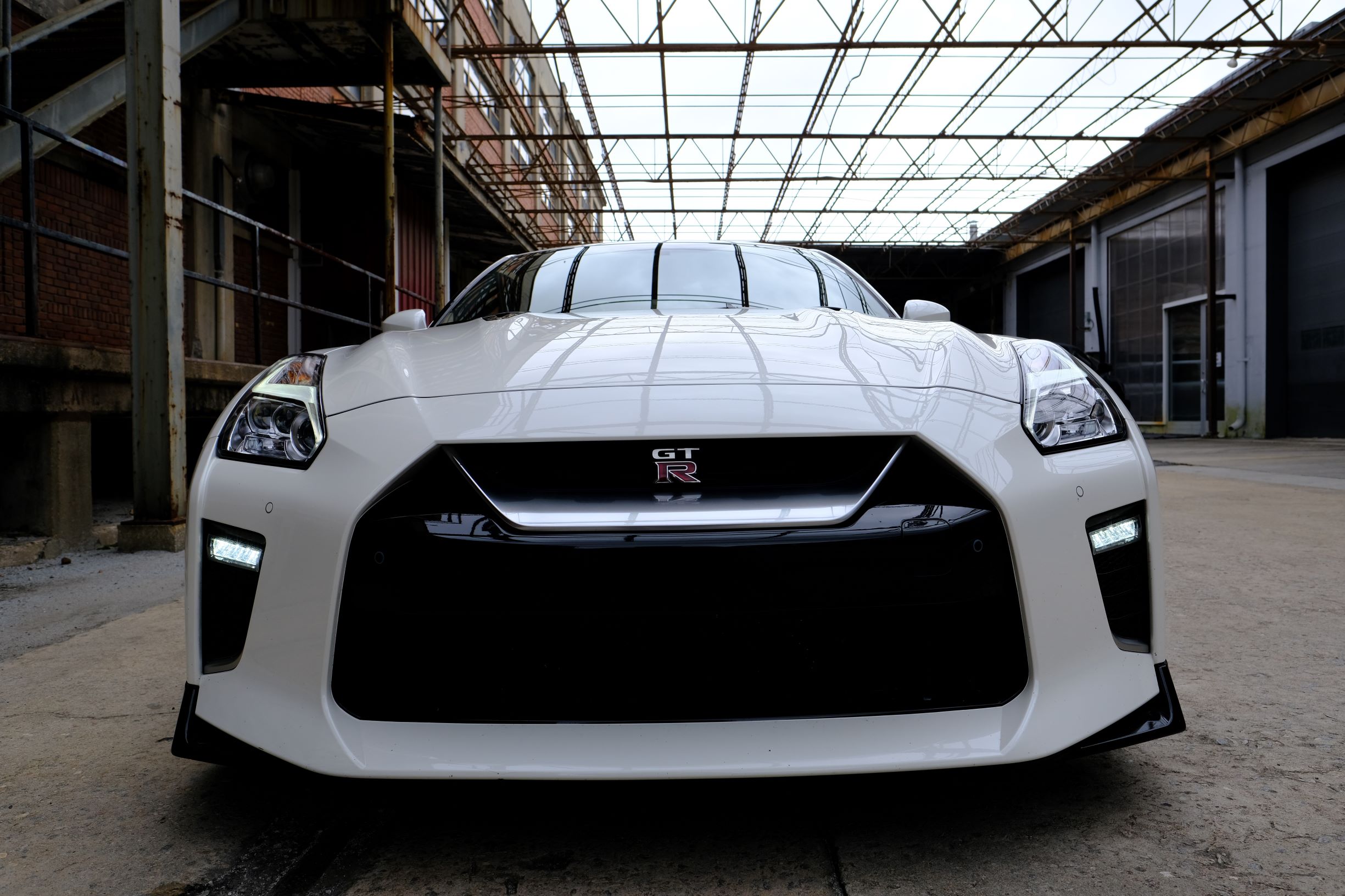
But all this comes with some compromises if you’re buying a GT-R as a daily driver. Despite the fact that it’s promoted as an approachable, go-anywhere, do-anything supercar, it’s still a supercar. First of all, it sits extremely low to the ground. The fascia, at once beautiful and menacing, is also a source of stress when you’re driving on the imperfect surfaces of daily life. I have never been more afraid of potholes, curbs, and driveways than I was driving the uneven roads of my historic hometown of Charleston. It was the only time in my life that I’ve actually wanted to snap my fingers and be in Arizona. It’s a car that yearns for a racetrack, or at least smooth pavement and the absence of law enforcement.
Final Thoughts
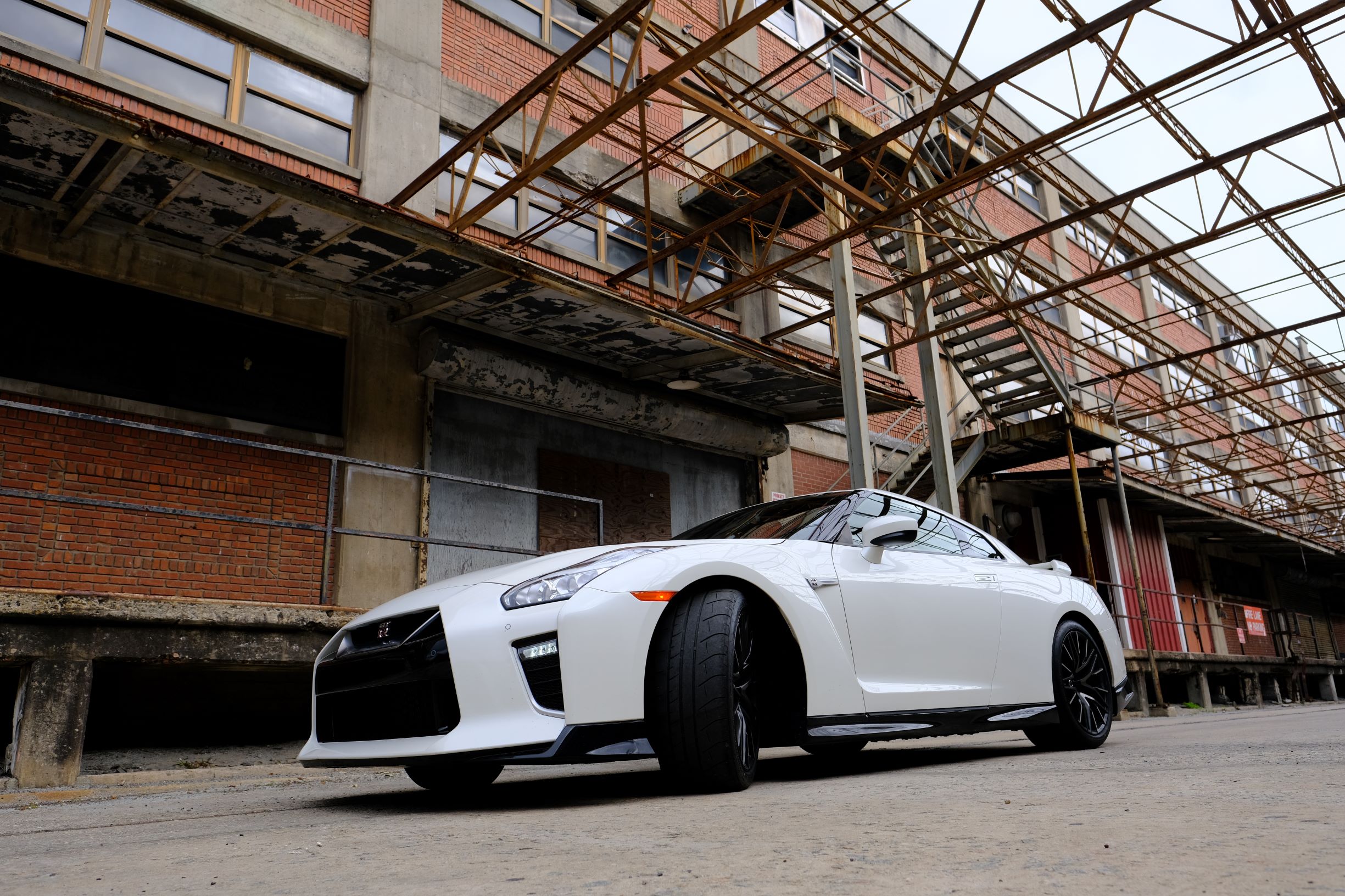
As a supercar that is comparatively affordable, the GT-R still arguably has the best dollar-to-performance ratio out there. However, the competition has evolved over the past 13 years, with options on the market like the new Corvette Stingray and Toyota Supra. While neither could beat the GT-R on the track, both deliver a potent racing experience at an even more approachable price.
Driving the GT-R is a singular experience that lives up to the Godzilla legend. It remains somewhat approachable financially, and you can take it to the track, and then drive it home without it overheating or breaking down. At some point, will it be priced too deeply into a niche? Will it go electric and change the conversation? For now, there’s something very alluring about a car that knows exactly what it is, and doesn’t shy away from its idiosyncrasies.

The GT-R is a machine for people who love driving. And not just driving, but racing. And not just the kind that happens on a track, but also in their chest. It’s for people who want to focus on the analog experience, to feel the road beneath them, while keeping the advanced tech under the hood rather than in their face.
Hunter S. Thompson once wrote that “there is no honest way to explain [The Edge], because the only people who really know where it is are the ones who have gone over.”
Perhaps more than anything, this is a car for those who want to be reminded of that edge, anytime they get behind the wheel, always lurking just to the right of the needle, and just beyond the horizon.
